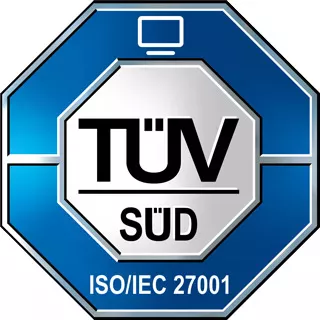Employees quitting their jobs due to low salary is not as prevalent as commonly believed. Rather, factors such as company culture, internal communication, and work-life balance play a larger role in employee turnover (source: harbinger-consulting.com). Employers should pay close attention to employee satisfaction management in order to retain their employees long-term and avoid high turnover.
An employee survey tool is useful for measuring employee satisfaction and gaining more insight into the company’s atmosphere (see Part 1: The quest for employee satisfaction: Do surveys hold the key?). Specific improvements can be derived from employee feedback. However, as an employer, it is important to respond to this feedback in a timely manner in order for the initiative to remain credible. Additionally, of course, it is important to follow up to see if the measures taken have any effect. So what should a good employee survey tool be able to do in order to generate authentic feedback and systematically build on the insights gained?
A Multi-Channel Employee Survey Tool: Flexibility in Measuring Satisfaction
Employee satisfaction surveys that use standard templates may not effectively engage employees. To increase participation, it’s important to tailor the survey questions to the specific organization and workforce. When selecting an employee survey tool, it is important to make sure that the questionnaire can be flexibly and attractively designed. It should also make it easy for staff to complete the survey and minimize interruptions. Traditional paper surveys can be problematic, with risks such as lost or hard-to-read questionnaires and time-consuming evaluations.
Multi-channel surveys, which can be accessed through QR codes and web links, can overcome these challenges and integrate easily within the company. Additionally, paper questionnaires can be made available. Outsourced digitization services can provide efficient, anonymous digitization of feedback in this case. The survey results can also be accessed and evaluated in real-time.
Empowering Employee Voices: How to Obtain High Participation and Authentic Feedback
Obstacles that lead to low participation and weak data quality can be present in any questionnaire. However, with clever design, these typical challenges can be overcome in your employee satisfaction survey.
Anonymous access: Often, existing hierarchies and professional dependencies result in employees feeling inhibited or not participating in the survey at all. Special nuances in the design of an anonymous employee survey can thus provide a solution for employees to feel more comfortable. Individual survey links or QR codes with access keys ensure high anonymity and prevent deductions about individual employees.
Start-stop function: Frequent interruptions during the survey are also considered a typical cause of missing feedback. Start-stop functions can help to resolve this issue. They allow interim results in answering digital questionnaires to be automatically saved and resumed later without loss of data.
Data availability without delay: Survey results often take a long time to be available. Digital survey solutions provide an added benefit in the evaluation of data, as they are immediately accessible for analysis purposes. During the early stages of the survey period, the highest response rate is recorded, allowing companies to see early trends. Any errors in the questionnaire design can be quickly identified and corrected if necessary. Additionally, the participation rate can be increased through the use of reminders.
This Is What Your Anonymous Employee Survey Could Look Like
Real-Time Evaluations for a Quick Identification of Problem Areas
A web-based evaluation platform offers numerous advantages for the analysis of (anonymous) employee surveys. It can neatly display the most important indicators and prepare them graphically in a Cockpit. These indicators include:

Exemplary employee survey tool: The software can be comfortably accessed on various channels.
These evaluations can be supplemented by comparing departments with regard to their overall satisfaction. The cockpits enable a graphical display of the results and provide a clear overview of all comments on open questions. Optionally, the platform can be connected to an integrated ticket system for a systematic follow-up of derived measures.
Improving Employee Well-Being – A Persistent Pursuit
By treating our employees fairly, even making them our partners, we provide them with the freedom and license to perform excellent service.
Sabine Hübner | Service Performance Expert of the Top-Players
Smart employee survey tools can help companies manage employee satisfaction by making it easier to design questionnaires, analyze results and utilize digital channels and beneficial features to boost the number of participants. Data analysis tools enable employers to spot potential issues and weaknesses quickly and take prompt action, thus reinforcing the trustworthiness of the survey and improving future employee satisfaction surveys. Working closely with staff to develop their culture and job satisfaction will prove beneficial in the long run.
Let Us Help You Improve Your Employee Satisfaction
As an expert in the field of Employee Experience Management, Spectos offers support in preparing, conducting and evaluating customized employee surveys. With our tailored Spectos Real-Time Performance Management™ Platform, you can always keep track of your survey results.





